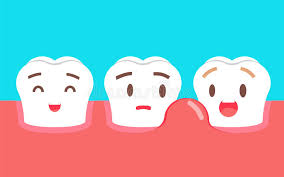The very latest treatment for periodontal disease is the Perioscope–and the best news is that it is non-surgical! No laser, no scalpel, no sutures and no downtime.
Periodontal disease is treated in a number of ways by removing the deposits that build up on the root under the gum line. These deposits are not able to be seen during a traditional deep cleaning (also called scaling and root planing) where the hygienist spends her time cleaning below the gum line with hand held instruments. Therefore, this treatment method may not rid the oral foundation of all of the infection, even in the most well-trained hands. Surgery would often be the next step of treatment to expose the deposits on the roots so they can be visualized and then removed. The latest technology of perioscopy changes all of this!
How Does the Perioscope Work?
Perioscopy is similar to medical orthoscopic and endoscopic technology. It uses the tiniest fiber optic camera, about 1mm in diameter. It is gently inserted into the space between the gum and the tooth and allows the dental operator to see the deposits on a monitor. These deposits are illuminated and magnified about 45 times, thus being easily visible. They are then removed using gentle, ultrasonic instruments. Often times, a medicament or regenerative material may be placed into the gums after tartar is removed to help maximize healing and successful treatment outcomes.
The Benefits of Periodontal Endoscopy:
- Can eliminate the need for surgery
- Sutures are not used
- Little-to-no pain or downtime
- Less time and cost than surgery
- Highly comfortable procedure
Who is a Candidate for Perioscopy?
Some patients are better suited than others to have periodontal endoscopic debridement. A periodontist, a dentist who specializes in treating the gums and bone, can help with a good diagnosis and make a recommendation for perioscopy treatment. Someone who has isolated areas of periodontal infection may be a good candidate. The perioscope may be beneficial for someone who has a moderate level of gum disease. Sometimes patients have had multiple rounds of traditional deep cleaning with no or short-term results. The perioscope could detect and illuminate those deposits that were left behind–thus the reason for repeated deep cleanings.
Other Uses for the Perioscope
The benefits of periodontal endoscopy are not just for treating gum disease. When used properly, the perioscope is a very powerful diagnostic tool for the early detection and treatment of many conditions. This may include:
- Detection of decay or failing restorations
- Assistance in diagnosing root fractures
- Visualizing and removing undetectable cement from restorations and implants
- Treating failing implants (a very beneficial use)
The development of the perioscope is certainly an exciting arena in periodontal care! Find a periodontist who can help diagnose and assist with the best treatment recommendation. See if you are a candidate for the non-surgical option of the Perioscope!



 Root Sensitivity–Everything You Wanted to Know
Root Sensitivity–Everything You Wanted to Know